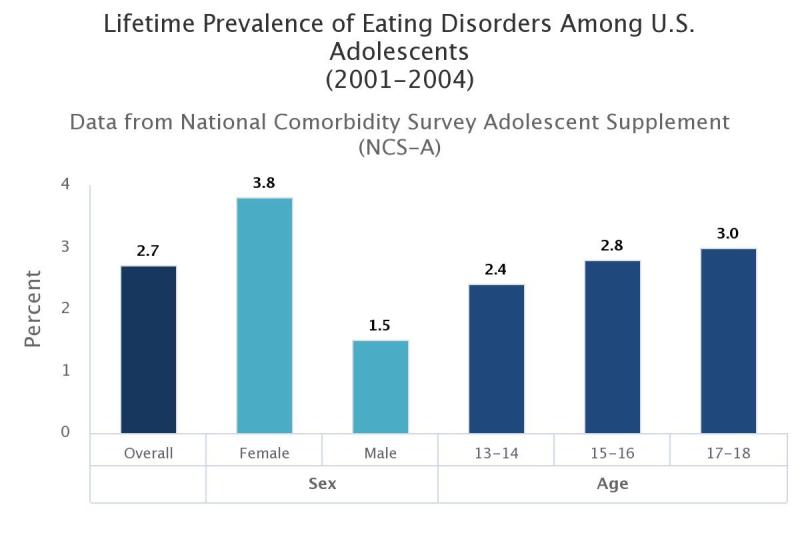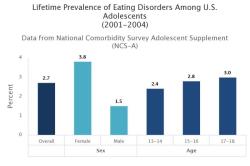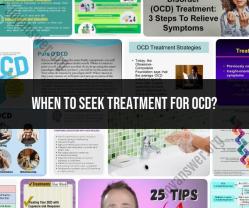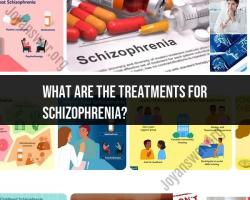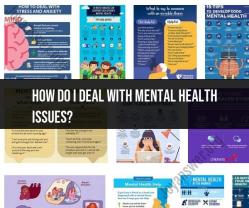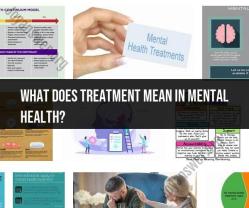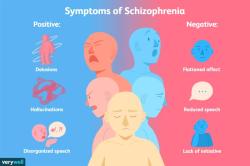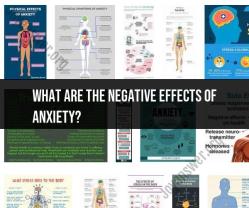What is the success rate of anorexia?
Executive Summary
Anorexia Nervosa (AN) is a severe and potentially life-threatening eating disorder characterized by extreme restriction of food intake, significantly low body weight, an intense fear of gaining weight, and a distorted body image. The journey to recovery from AN is complex and multifaceted, extending beyond mere weight restoration to encompass profound psychological and functional well-being. Reported recovery rates vary considerably across studies, largely influenced by the definition of recovery employed and the duration of follow-up. While a significant proportion of individuals achieve partial or full symptom remission over time, complete and sustained recovery, defined holistically, can be elusive for many, underscoring the often protracted and non-linear course of the illness.
Effective treatment for AN necessitates a comprehensive, multidisciplinary approach that integrates medical stabilization, nutritional rehabilitation, and various psychotherapeutic interventions. Early intervention is consistently associated with improved outcomes. Despite therapeutic advancements, relapse remains a common challenge, particularly within the first two years post-treatment, highlighting the critical need for robust relapse prevention strategies and long-term support. Numerous patient-specific and treatment-related factors influence recovery success, while systemic, cultural, and personal barriers frequently impede access to and engagement in necessary care. A nuanced understanding of these dynamics is essential for optimizing treatment outcomes and improving the long-term prognosis for individuals affected by AN.
1. Introduction to Anorexia Nervosa
Anorexia Nervosa (AN) represents a severe and complex psychiatric disorder with profound physical and psychological consequences. Understanding its fundamental characteristics and the associated health risks is crucial for appreciating the intricate nature of its recovery process.
1.1. Definition and Diagnostic Criteria (DSM-5)
Anorexia Nervosa is medically defined by a persistent restriction of energy intake relative to requirements, leading to a significantly low body weight. Individuals afflicted with this disorder typically exhibit an intense fear of gaining weight or becoming "fat," coupled with a distorted perception of their body image and a diminished capacity to recognize the severity of their low body weight. The diagnostic framework provided by the American Psychiatric Association's Diagnostic and Statistical Manual of Mental Disorders, Fifth Edition (DSM-5), classifies AN by its specific type, current status, and severity. A notable revision in the DSM-5 criteria was the removal of amenorrhea, the absence of menstruation, as a mandatory diagnostic criterion.
This particular adjustment in the DSM-5 has significant implications for diagnosis and, consequently, for treatment outcomes. By no longer requiring amenorrhea for diagnosis, the criteria now permit the identification of AN in a broader patient population, including males, pre-menarcheal females, or females who experience irregular but not entirely absent periods. This expanded diagnostic scope facilitates earlier identification of the disorder in a more diverse group of individuals. Timelier diagnosis is consistently linked to improved treatment outcomes and higher rates of success in recovery. Thus, this seemingly minor diagnostic change can have a substantial ripple effect, potentially enhancing population-level recovery statistics by enabling earlier intervention for a wider array of patients. It also underscores how the very definition of an illness can influence how recovery and its success are measured and perceived over time.
AN manifests in two primary subtypes: the restricting type, where weight loss is achieved predominantly through strict dieting, fasting, or excessive exercise; and the binge-eating/purging type, which involves recurrent episodes of binge eating and/or purging behaviors, such as self-induced vomiting or the misuse of laxatives or diuretics.
1.2. Clinical Characteristics and Associated Complications
Individuals with AN often engage in highly controlled and rigid eating behaviors, including meticulous calorie counting or precise portion control. Beyond dietary restriction, many employ purging methods, such as self-induced vomiting or the use of diuretics or laxatives, and frequently engage in compulsive exercise for extended durations.
The prolonged starvation and purging behaviors inherent to AN lead to a cascade of severe physical complications. These can include abnormal heart rhythms (arrhythmias), episodes of dizziness or fainting, profound fatigue and physical weakness, persistent sensation of coldness, hair loss, and the cessation or irregularity of menstrual periods. Swelling in the limbs is also a common manifestation. Critically, medically unstable conditions, such as severe bradycardia (slow heart rate), dehydration, hypoglycemia, significant electrolyte imbalances (which can indicate refeeding syndrome), hypothermia, hypotension (low blood pressure), and organ compromise, often necessitate immediate acute medical treatment or hospitalization to prevent life-threatening events.
Anorexia Nervosa is recognized as one of the most lethal mental health conditions, carrying a mortality rate substantially higher than that of other psychiatric disorders. Statistical data indicate that between 5% and 10% of individuals diagnosed with AN may die within 10 years of diagnosis, with this figure rising to 18% to 20% within 20 years. The mortality rate associated with AN is a staggering 12 times higher than the death rate from all causes in females aged 15-24 years. Fatal outcomes most commonly result from severe cardiac irregularities or suicide.
The exceptionally high mortality rate and the severe physical complications associated with AN fundamentally reshape the understanding of "recovery success." This extends beyond mere symptom remission to encompass the preservation of life and the prevention of irreversible physiological damage. The extreme lethality of AN means that any discussion of a "success rate" must first account for survival. Even a partial recovery that mitigates immediate medical risks, such as restoring weight to a medically stable level or correcting electrolyte imbalances, should be considered a critical success because it directly addresses the life-threatening nature of the illness. This imperative for survival necessitates a rapid, aggressive, and multidisciplinary approach to treatment, where medical care and nutritional rehabilitation take precedence in the initial phases of intervention. The fact that death commonly arises from cardiac irregularities and suicide further underscores the urgency of concurrently addressing both physical dangers and severe mental health aspects, such as suicide risk, highlighting the complex interplay that defines true "treatment outcomes" in AN.
Furthermore, AN frequently co-occurs with other psychiatric disorders, most commonly mood disorders (such as major depressive disorder), anxiety disorders, obsessive-compulsive disorder (OCD), and alcohol and substance use disorders. These co-occurring conditions can significantly complicate the treatment process and influence the overall prognosis.
2. Defining Recovery in Anorexia Nervosa
The concept of "recovery" in Anorexia Nervosa has evolved significantly, moving beyond a narrow focus on symptom absence to embrace a more comprehensive understanding of well-being. This evolution reflects a deeper appreciation for the complex interplay of physical, psychological, and social factors in the illness.
2.1. Evolution of Recovery Definitions: Beyond Symptom Remission
Historically, recovery from AN was often defined in a relatively narrow manner, primarily focusing on the remission of overt eating disorder symptoms. This included objective measures such as the frequency or complete absence of binging and purging behaviors, achieving specific cut-off scores on symptom questionnaires, or reaching a target Body Mass Index (BMI). Researchers like Steinhausen (2002) acknowledged the significant variation in these outcome criteria across studies, even when the focus remained on the remission of essential clinical symptoms.
However, a growing consensus within the field now emphasizes a more holistic definition of recovery that transcends mere symptom remission. This broader perspective integrates various dimensions of mental health, including overall quality of life, psychological well-being, social functioning, emotional functioning, and the individual's capacity for self-adaptability and resilience. A UCSF-led study, for instance, articulated that "full recovery means that patients can find joy in their daily life, free from the physical and psychological effects caused by restrictive dieting". This study further highlighted that parents of patients advocate for a more expansive view of recovery, one that incorporates psychological well-being and the establishment of a meaningful life, suggesting that traditional research often "misses the mark in defining recovery by weight and/or eating disorder symptoms in the absence of these other factors".
The shift from purely symptomatic definitions to more holistic ones reflects a deeper, more mature understanding of AN as a complex biopsychosocial disorder. This acknowledges that physical recovery alone does not equate to full mental health or sustained well-being. An individual might successfully restore their weight, representing physical recovery, yet remain tormented by body image distortion or an intense fear of gaining weight, which are profound cognitive and psychological symptoms. If recovery were defined solely by the absence of physical symptoms, these individuals might be considered "recovered," but they would remain highly susceptible to relapse, a vulnerability confirmed by findings that "patients who only achieved partial recovery continued to struggle and were much more susceptible to relapse". This broader definition necessitates that treatment outcomes, and consequently "success rates," be evaluated using a multi-dimensional framework. Studies that rely exclusively on older, narrower definitions might inadvertently overestimate "recovery" or fail to capture the persistent internal struggles of patients, potentially leading to misleading success rate reporting. This also implies that true, lasting recovery demands sustained therapeutic work on cognitive and emotional symptoms
after physical stabilization, and that treatment success should be measured over a longer time horizon to capture this deeper, more durable change.
It is often observed that physical and behavioral recovery, such as the resumption of regular eating habits, typically precedes cognitive recovery, where individuals are no longer plagued by extreme fear of weight gain and body image distortion. This sequential progression underscores the complexity involved in achieving comprehensive and lasting recovery.
2.2. Key Criteria for Measuring Recovery: Clinical and Holistic Perspectives
Based on current research and clinical consensus, a comprehensive definition of AN recovery encompasses several interconnected domains:
Physical and Behavioral Remission: This domain includes the restoration and maintenance of a healthy body weight, often specified as reaching a minimum of 90% of ideal body weight or a BMI of 19 kg/m2 or higher for adults. It also involves the normalization of eating patterns, characterized by regular, balanced eating free from restrictive behaviors, calorie counting, or excessive preoccupation with food. Crucially, there must be a sustained absence of disordered behaviors such as binging, purging (including self-induced vomiting, laxative, or diuretic misuse), and compulsive exercise. Furthermore, the resolution of physical complications, including improvements in low energy, insomnia, dry skin, hair loss, and the restoration of hormonal stability (e.g., regular menstruation), are vital indicators of physical healing.
Psychological and Cognitive Well-being: This aspect of recovery involves a significant reduction in preoccupation with food and body image, the absence of an intense, irrational fear of gaining weight, and a decrease in distorted self-perception. Positive psychological indicators include improved mental clarity and mood stabilization, a reduction in symptoms of anxiety and depression, enhanced cognitive function, self-acceptance, the development of positive relations with others, personal growth, autonomy, and a sense of purpose in life.
Functional and Social Integration: A recovered individual is able to find joy in daily life, actively engage in meaningful activities, and establish a life worth living, free from the pervasive influence and constraints of the eating disorder. This also encompasses the ability to manage one's environment effectively and engage in social integration, signifying a return to healthy functioning across various life domains.
The explicit detailing of these multi-domain criteria for recovery highlights that "success" in AN is not a simple binary outcome but rather a complex, multi-layered process, where different aspects of recovery may occur sequentially. The observation that physical and behavioral recovery often precedes cognitive recovery is a critical understanding of the healing process. This implies that an individual might successfully restore weight and normalize eating behaviors, representing a significant physical achievement, yet continue to struggle internally with the fear of weight gain or persistent body image distortion. True, durable recovery necessitates addressing both these external and internal dimensions. This sequential nature means that "success" is not a single, instantaneous event but a continuous progression. This understanding has direct implications for treatment planning and patient education, suggesting that clinicians should manage expectations, acknowledging that internal cognitive shifts require time, even after external behaviors improve. It also reinforces the need for sustained psychological interventions beyond initial physical stabilization, which directly impacts the long-term success rate and reduces the likelihood of relapse from partial recovery.
Table 1: Comprehensive Criteria for Anorexia Nervosa Recovery
| Category | Specific Criteria | Description | Relevant Snippets |
| Physical/Behavioral Remission | Healthy Weight Restoration | Achieving and maintaining a healthy body weight (e.g., ≥ 90% ideal body weight or BMI ≥ 19 kg/m2 for adults). | |
| Normalization of Eating Patterns | Regular, balanced eating without restriction, calorie counting, or preoccupation with food. | ||
| Absence of Disordered Behaviors | Sustained absence of binging, purging (self-induced vomiting, laxative/diuretic misuse), and compulsive exercise. | ||
| Resolution of Physical Complications | Improvement in physical symptoms such as low energy, insomnia, dry skin, hair loss, and restoration of hormonal stability (e.g., regular menstruation). | ||
| Psychological/Cognitive Well-being | Reduced Preoccupation with Food/Body | Significant decrease in intrusive thoughts about food, weight, and body shape. | |
| Absence of Intense Fear of Weight Gain | Freedom from the intense, irrational fear of gaining weight or becoming "fat." | ||
| Absence of Distorted Body Image | A realistic and accepting perception of one's body shape and weight. | ||
| Improved Mental Clarity and Mood | Stabilization of mood, reduction in anxiety and depressive symptoms, and enhanced cognitive function. | ||
| Self-Acceptance and Self-Esteem | Holding positive attitudes towards oneself, self-respect, and a compassionate attitude towards self. | ||
| Functional/Social Integration | Finding Joy and Meaning in Life | Ability to experience pleasure, engage in daily life, and pursue a meaningful existence free from the eating disorder's constraints. | |
| Positive Relationships and Social Functioning | Engaging in warm, satisfying, trusting personal relationships and active participation in social life/community. | ||
| Personal Growth and Autonomy | Showing insight into oneself, having a sense of development, being open to new experiences, and exhibiting self-direction and independence. |
3. Anorexia Nervosa Recovery Rates and Prognosis
The reported success rates and long-term prognosis for Anorexia Nervosa are highly variable, reflecting the complex and often protracted nature of the disorder. Understanding this variability is key to setting realistic expectations for patients and clinicians.
3.1. Overall Recovery and Remission Statistics
The reported "success rate" or remission rate for AN varies significantly across research studies, primarily due to differences in the definition of recovery utilized and the duration of the follow-up period. In shorter-term studies or specific patient cohorts, it has been observed that approximately three-fourths (75%) of individuals treated in outpatient settings may achieve remission within five years, with a similar percentage experiencing intermediate-good outcomes, including weight gain. However, a UCSF-led study presented a more nuanced picture, finding that while 3 out of 4 patients (75%) achieved a
partial recovery, only 21% attained a full recovery, which was defined holistically as finding joy in daily life, free from the physical and psychological effects of restrictive dieting. This study also noted that prior research often cited around 50% complete recovery, but their specific cohort included a higher proportion of patients with refractory illness.
When considering long-term outcomes, recovery rates tend to increase substantially. A comprehensive review of 119 outcome studies demonstrated that the mean recovery rate in AN increased from 32.6% in studies with follow-up periods of less than 4 years, to 47.0% in studies with 4 to 10 years of follow-up, and significantly to 73.2% in studies with follow-up periods exceeding 10 years. Specific long-term studies have reported varied but often favorable outcomes: a German study observed 51% recovery after 21 years, an American study reported 63% after 22 years, and a Swedish study found 76% recovery after 33 years. Notably, a 30-year follow-up study focusing on adolescent-onset AN indicated that 64% of participants achieved full eating disorder symptom recovery, defined as being free of all criteria for six consecutive months. Overall, the existing literature suggests that approximately half of individuals with AN are classified as fully recovered, about one in three show improvement but continue to experience some symptoms, and up to one in five follow a chronic course. For those who actively engage in professional treatment, statistics suggest that 60% may achieve a full recovery.
The wide disparity in reported recovery rates is not necessarily a contradiction but rather a critical indicator of the protracted and complex nature of AN recovery. This variability highlights that "success" is highly dependent on the definition used and, crucially, the time frame over which it is measured. The lower percentages, such as the 21% full recovery reported in some studies, often reflect a more stringent, holistic definition of "full recovery" or shorter follow-up periods. In contrast, higher percentages, like the 73.2% observed over more than 10 years, are typically associated with longer observation times and sometimes a primary focus on symptom remission. This pattern suggests that AN is often a chronic condition where complete, sustained recovery can indeed take many years, and initial outcomes may not fully reflect the ultimate prognosis. This implies that clinicians and patients should view recovery as a marathon, not a sprint. Setting realistic expectations about the timeline for full recovery is crucial for maintaining motivation and consistent engagement in long-term treatment. It also suggests that short-term "success rates" might not fully capture the potential for eventual recovery, and therefore, continuous support, even after initial symptom abatement, is vital for improving long-term outcomes and preventing relapse.
3.2. Long-Term Outcomes and the Course of Illness
Anorexia Nervosa can indeed be a chronic disorder for a significant minority of patients, with approximately one in five individuals experiencing a chronic course of the illness. In one 30-year follow-up study, participants reported having an eating disorder diagnosis for an average of 10 years during that extensive period. The trajectory of the illness is often non-linear, meaning that recovery is not a straightforward path. Many individuals who initially achieve only partial recovery may eventually progress to full recovery over extended follow-up periods, sometimes spanning decades.
Diagnostic crossover is a common phenomenon throughout the illness trajectory. For example, individuals initially diagnosed with AN may, at later stages, meet the diagnostic criteria for other eating disorders, such as bulimia nervosa or other specified feeding or eating disorder (OSFED). One study specifically noted that half of the AN group had met criteria for bulimia nervosa at some point by the 10-year follow-up mark.
The fluctuating and often chronic nature of AN, coupled with common diagnostic crossovers, reveals that recovery is rarely a linear progression but rather a dynamic process requiring flexible and adaptive long-term care strategies. The fact that a patient might achieve remission from AN symptoms but then transition to another eating disorder or struggle with persistent co-occurring conditions means that "success" should be viewed as sustained well-being across the entire spectrum of eating disorder behaviors and associated mental health challenges, not merely the absence of AN symptoms. The ability for partial recovery to progress to full recovery over decades also underscores that interventions must be sustained and adaptable over very long periods. This dynamic course necessitates that treatment plans are not "one-and-done" but involve ongoing monitoring and flexible interventions to address emerging symptoms or diagnostic shifts. It also highlights the importance of comprehensive psychiatric assessment and treatment for co-occurring conditions, as these can significantly impede long-term stability even if eating disorder symptoms abate.
Co-occurring psychiatric morbidity often persists in the long term. For instance, at a 30-year follow-up, 38% of the AN group had other psychiatric diagnoses, with anxiety disorders being particularly prevalent. This consistent presence of comorbidities underscores the ongoing need for integrated mental health care that extends beyond addressing only the eating disorder symptoms.
3.3. Relapse Rates and Risk Periods
Relapse is a common and often expected component of the recovery journey for individuals with eating disorders, including AN, and its occurrence should not be interpreted as a failure of the individual or the treatment. The period of highest risk for relapse from AN typically falls within the first 18 months to two years after the completion of initial treatment. Studies report a wide range of relapse rates, from 9% to 65%, with common estimates hovering around 35% to 41% within this critical post-treatment period.
Several factors are known to increase the risk of relapse. These include older age at diagnosis, a longer duration of the disease, lower body fat or weight at the point of treatment completion, the presence of co-morbid psychiatric disorders, and receiving therapy outside of a specialized clinic. Specifically, adolescents who are less weight-restored when discharged from treatment facilities are significantly more likely to experience a relapse. Similarly, patients who achieve only a partial recovery are considerably more susceptible to relapse compared to those who achieve full remission.
The high prevalence and predictable timing of relapse underscore that recovery from AN is not merely about achieving initial remission but critically about implementing robust, structured relapse prevention strategies and providing sustained post-treatment support. The normalization of relapse as a "common part of eating disorder recovery" fundamentally shifts the perspective from a treatment "failure" to an expected, manageable phase of a chronic illness. This understanding is crucial for both patients, as it can reduce feelings of shame and hopelessness, and for clinicians, as it informs proactive intervention. The identification of a specific high-risk period (the first 18 months) and clear predictors, such as insufficient weight restoration at discharge and co-occurring conditions, provides actionable intelligence for developing targeted relapse prevention plans.
The concepts of "lapse," "relapse," and "collapse," adapted from addiction treatment, offer a helpful framework: a "lapse" is an isolated incident or "slip," a "relapse" signifies a longer episode or period of symptom use where the individual struggles to regain control, and a "collapse" indicates a severe worsening of symptoms that may necessitate a higher level of care. Early recognition and decisive intervention during a lapse can often prevent progression to a full relapse, thereby improving long-term success rates.
4. Effective Treatment Modalities for Anorexia Nervosa
Effective treatment for Anorexia Nervosa is a complex undertaking that requires a carefully orchestrated, multidisciplinary approach. The primary goal is not only to restore physical health but also to address the deep-seated psychological and behavioral patterns that sustain the disorder.
4.1. Core Components of a Multidisciplinary Treatment Approach
Effective treatment for AN is fundamentally multifaceted and requires a collaborative effort from a multidisciplinary team to address both the patient's physical and psychological health. The overarching goals of treatment encompass restoring good nutrition, stabilizing weight loss, eliminating disordered eating behaviors, and treating any underlying psychological concerns. A comprehensive treatment plan typically integrates several key strategies: various forms of psychotherapy (individual, group, and/or family therapy), specialized nutrition counseling, judicious use of medication therapy, and essential medical care, including hospitalization when medically necessary.
Early intervention is consistently identified as a critical factor for treatment success, significantly improving outcomes. Furthermore, due to the chronic and relapsing nature of AN, long-term treatment and ongoing care are often necessary for sustained recovery and to prevent setbacks. The consistent emphasis on a multidisciplinary, multifaceted, and long-term approach highlights that AN is not merely a mental health condition but a complex biopsychosocial illness requiring integrated care across various medical and psychological disciplines. The necessity of this integrated approach reveals a fundamental understanding of AN's pathology: physical deterioration resulting from starvation directly impairs mental function and emotional regulation. Therefore, medical stabilization is not just a safety measure but a prerequisite for effective psychological work. This indicates that treatment "success" is highly dependent on the seamless coordination and communication among different specialists. This integrated approach directly combats the high mortality rate associated with AN by simultaneously addressing immediate physical dangers and the underlying psychological drivers. It also suggests that barriers to care that disrupt this multidisciplinary integration, such as a lack of coordination across different levels of care, can severely compromise treatment effectiveness and overall success rates, even if individual components of care are present.
4.2. Psychotherapeutic Interventions
Psychotherapy forms the cornerstone of long-term treatment for Anorexia Nervosa, aiming to change the distorted thinking and behavioral patterns associated with the disorder.
Family-Based Therapy (FBT): The Gold Standard for Adolescents and Young Adults
Family-Based Therapy (FBT), also known as the Maudsley Method, is widely recognized as the "gold standard" and most effective treatment approach for adolescents with AN. Extensive research strongly supports its effectiveness, demonstrating that it leads to the best outcomes for young people. FBT uniquely empowers healthy family members to assume a primary role in the patient's treatment, particularly in the crucial tasks of re-nourishing the patient and interrupting disordered behaviors. This collaborative approach often results in more rapid weight restoration, fewer instances of hospitalization, and proves to be more cost-effective compared to other family-oriented therapies.
For adolescents, FBT has demonstrated considerable success in achieving weight restoration for at least 50% to 60% of patients within a year, with this weight maintenance sustained for 2 to 4 years post-treatment. Treatment gains achieved through FBT have been shown to be maintained for up to 4 years after the conclusion of therapy. Adaptations of FBT, such as Family-Based Treatment for Transition Age Youth (FBT-TAY), may also prove effective for older patients (ages 18-26) who can still benefit significantly from the structured support of their family unit.
FBT's unparalleled success for adolescents lies in its unique empowerment of the family unit to externalize the illness and take immediate control of re-nourishment. This directly addresses the critical physical component of AN before deeper psychological work can effectively begin. The "gold standard" status of FBT is not just about its efficacy, but how it achieves it. By temporarily shifting control of eating decisions to caregivers, FBT directly confronts the immediate, life-threatening physical symptoms of malnutrition and low weight. This rapid physical stabilization is crucial because cognitive recovery, such as reducing the intense fear of weight gain, often
follows physical recovery. This "cause-agnostic" approach, as it is sometimes described , allows for immediate behavioral change without getting bogged down in the patient's initial resistance or distorted thoughts, which are frequently a direct consequence of starvation. This implies that for adolescents, the "success rate" of AN treatment is significantly enhanced by leveraging the family as a primary therapeutic agent. It also suggests a critical barrier: if a strong, supportive family unit is absent or unwilling to engage, the effectiveness of this gold-standard treatment may be compromised, necessitating alternative or adapted approaches. The sustained gains observed over several years suggest that this early, intensive intervention can profoundly alter the long-term trajectory of the illness, potentially reducing its chronicity.
Enhanced Cognitive Behavioral Therapy (CBT-E) and Other Cognitive Approaches
Enhanced Cognitive Behavioral Therapy (CBT-E) is widely regarded as one of the most effective treatments for eating disorders in adults. This therapeutic approach focuses on identifying and addressing distorted views and attitudes concerning weight, shape, and appearance, while also helping patients implement crucial behavioral changes. CBT-E assists individuals in learning to recognize and modify the distorted thoughts that drive eating disorder behaviors, with approximately two-thirds of patients demonstrating a positive response. It has been found to be particularly effective in addressing issues such as mood intolerance, perfectionism, interpersonal difficulties, and low self-esteem.
However, it is important to note a specific nuance regarding CBT-E's application in AN. While Cognitive Behavioral Therapy (CBT) in its broader sense is generally effective for various eating disorders , some sources indicate that CBT-E specifically "has not been shown to be effective for anorexia nervosa" , suggesting its primary efficacy may lie more with bulimia nervosa or binge-eating disorder. This highlights the importance of carefully tailoring therapeutic interventions to the specific eating disorder diagnosis and the individual patient's needs. This apparent discrepancy reveals a crucial nuance in treatment efficacy. While CBT-E is broadly effective across the spectrum of eating disorders, its direct application and "success rate" for
Anorexia Nervosa in adults may be limited, particularly in the initial phases where weight restoration is paramount. This suggests that the underlying mechanisms or primary targets of CBT-E, such as cognitive distortions and behavioral patterns, might be less accessible or effective until a patient achieves medical stability and adequate nourishment, which is often not the immediate focus of CBT-E. This implies that for adult AN, CBT-E might serve as a valuable adjunctive or later-stage therapy once initial weight restoration and medical stabilization have been achieved. It reinforces the idea that treatment for AN is often sequential and multi-modal, with different therapies being most effective at different stages of recovery. This qualification is vital for setting realistic expectations for patients and clinicians regarding the "success rate" of specific therapeutic interventions in AN.
Dialectical Behavior Therapy (DBT) and Adjunctive Therapies
Dialectical Behavior Therapy (DBT) is another significant psychotherapeutic approach that equips patients with essential skills in mindfulness, improving interpersonal relationships, managing emotions, and tolerating distress. While DBT has shown particular effectiveness for binge eating disorder, research suggests that it can work synergistically with FBT for AN, as their respective strengths are complementary—FBT focusing on weight restoration and DBT addressing emotional dysregulation.
Other psychotherapies employed in AN treatment include Acceptance and Commitment Therapy (ACT), which focuses on cultivating motivation to change behaviors irrespective of challenging thoughts and feelings, and Interpersonal Psychotherapy (IPT), which aims to improve relationships and communication patterns that may contribute to eating disorder symptoms. Psychodynamic psychotherapy, by contrast, delves into the underlying root causes of AN. Additionally, complementary therapies such as meditation, yoga, and various relaxation techniques may offer supplementary benefits to individuals struggling with AN.
The integration of adjunctive therapies like DBT highlights that effective AN treatment extends beyond merely addressing core eating behaviors to encompass broader psychological vulnerabilities. Many patients with AN struggle with co-occurring psychiatric disorders and difficulties in coping with stress and intense emotions. Addressing these underlying vulnerabilities through skills-based therapies like DBT can significantly enhance a patient's capacity for sustained recovery, even after behavioral symptoms improve. This implies that a truly comprehensive and successful AN treatment plan often involves a sequential or concurrent application of different therapeutic modalities, tailored to the patient's evolving needs and comorbidities. While FBT might achieve initial weight restoration, therapies like DBT can equip patients with the internal resources needed to manage triggers and prevent relapse, thereby contributing to a more robust and long-lasting "success rate" by addressing the full spectrum of the patient's psychological well-being.
4.3. Medical Stabilization and Inpatient Care
Hospitalization is frequently a necessary initial step in the treatment of severe AN, particularly for patients who are medically unstable (e.g., experiencing severe bradycardia, dehydration, critical electrolyte imbalances, hypothermia, hypotension, or organ compromise) or who present with severe anorexia nervosa, defined as less than 70% of ideal body weight or acute weight loss accompanied by food refusal. Hospitalization may also be mandated for severe mental health concerns, such as a high risk of suicide.
The immediate focus of treatment in these inpatient settings is on stabilizing the patient's acute medical condition and initiating the process of restoring physical health, as severe nutritional deficiencies can lead to a wide range of physical and medical complications. Medical providers in these environments meticulously monitor vital signs, electrolyte levels, hydration status, and other physical conditions on a regular basis.
While essential for acute stabilization, the long-term recovery rates for patients who have undergone inpatient treatment for AN can vary. Studies focusing on inpatient samples report long-term recovery rates ranging from as low as 30% after 20 years to as high as 76% after 33 years. This variability underscores that inpatient care is typically a critical initial phase rather than a complete, standalone solution for recovery. Successful transition to lower levels of care and sustained engagement in ongoing treatment are vital for achieving and maintaining long-term recovery.
Medical stabilization through inpatient care is a critical, often life-saving, prerequisite for effective psychological treatment. Its varying long-term success rates highlight that it is typically an initial phase in a longer, multi-stage recovery journey. The primary function of inpatient care is to address the immediate, life-threatening physical consequences of AN. This medical stabilization is a foundational step because severe malnutrition profoundly impairs cognitive function and emotional regulation, rendering psychological interventions less effective. Therefore, "success" in inpatient care is often initially measured by physical parameters, such as weight gain and normalization of vital signs, which then
enables the subsequent, deeper psychological work. The variability in long-term outcomes suggests that inpatient care alone is insufficient for sustained recovery; the transition to and engagement in lower levels of care are crucial. This implies that the "success rate" of inpatient treatment should be considered within the broader context of the entire recovery continuum. A successful inpatient stay sets the stage, but true long-term success depends on the continuity of care, including partial hospitalization, intensive outpatient programs, and ongoing outpatient therapy.
4.4. The Role of Nutritional Rehabilitation and Pharmacotherapy
Nutritional rehabilitation stands as a foundational element of AN treatment, with its core objective being the restoration of good nutrition and the stabilization of weight loss. Nutrition counseling is indispensable for developing customized meal plans, guiding patients toward a healthy weight, and fostering an understanding and appreciation for the profound effects of nutrition on brain chemistry and emotional well-being. Adequate nourishment is fundamental for the body's healing processes, leading to improvements in physical symptoms such as low energy and insomnia, and crucially, supporting mental clarity and mood stabilization.
Pharmacotherapy plays a supportive, rather than primary, role in AN treatment. Its main function is to manage co-occurring psychiatric disorders and address complications, rather than serving as a standalone long-term cure for AN itself. Commonly prescribed medications include anti-anxiety drugs, antipsychotics (such as olanzapine, which can specifically aid in weight gain), mood stabilizers, and antidepressants (like fluoxetine).
Nutritional rehabilitation is a foundational element that enables both physical recovery and the efficacy of psychological interventions, while pharmacotherapy primarily functions as an adjunct, managing comorbidities and facilitating the overall therapeutic process. The emphasis on nutritional rehabilitation as a prerequisite for psychological healing reveals a critical cause-and-effect relationship. Severe malnutrition profoundly impairs cognitive function, emotional regulation, and the capacity for therapeutic engagement. Therefore, the "success rate" of psychotherapy is often contingent upon achieving a baseline of nutritional stability. Pharmacotherapy, while not directly treating the core AN pathology, facilitates recovery by alleviating distressing symptoms (e.g., anxiety, depression) and promoting weight gain (e.g., olanzapine), thereby improving a patient's capacity to engage in and benefit from the primary psychotherapeutic and nutritional interventions. This implies that a truly effective AN treatment plan must prioritize and integrate nutritional rehabilitation from the outset. Without it, the "success" of other interventions may be significantly limited or delayed. This reinforces the necessity of a truly multidisciplinary team, where registered dietitians and medical doctors are as integral to the "success rate" as psychotherapists.
5. Factors Influencing Recovery Success
The trajectory of recovery from Anorexia Nervosa is profoundly influenced by a complex interplay of patient-specific characteristics and the nature of the treatment received. Recognizing these factors is crucial for tailoring interventions and improving overall outcomes.
5.1. Patient-Specific Predictors
Several patient characteristics significantly influence the likelihood of recovery and the risk of relapse:
Age of Onset and Illness Duration: Generally, an adolescent onset of AN and early intervention are consistently associated with improved outcomes and higher success rates. Conversely, older age at diagnosis and a longer duration of illness prior to treatment are predictors of a poorer prognosis and an increased risk of relapse. However, one study noted a nuance: within the adolescent-onset group, a
higher age at onset was found to predict a better outcome , suggesting that the "early onset" category itself may contain important distinctions.
Weight at Treatment Completion: Patients who are older, have a longer duration of the disease, or have lower body fat or weight at the end of treatment are more prone to relapse. Among adolescents, being less weight-restored when leaving treatment significantly increases the likelihood of relapse. This highlights the critical importance of achieving and maintaining a healthy weight as a foundation for sustained recovery.
Co-occurring Psychiatric Disorders: The presence of co-morbid psychiatric disorders, such as mood disorders, anxiety disorders, or obsessive-compulsive disorder, is a significant negative predictor. These conditions can increase the risk of relapse and complicate the overall recovery process, often requiring integrated treatment plans.
Personality Traits and Motivation: Specific personality traits can influence recovery. Greater trait anxiety and the presence of self-induced vomiting behaviors are considered negative prognostic factors, predicting a lower likelihood of recovery. Similarly, poor motivation to recover, characterized by an uncooperative stance or preoccupation with intrusive thoughts, can significantly hinder progress. Conversely, a genuine desire for recovery is arguably the most important factor for maintaining the path to healing and navigating challenges. Interestingly, greater impulsivity was found to be a
positive prognostic factor for recovery in one study, although this association diminished as the duration of AN increased. Premorbid perfectionism was also identified as a predictor for better general functioning in adolescent-onset AN.
The diverse array of patient-specific predictors highlights that "recovery success" is not a uniform outcome but is profoundly individualized, influenced by a complex interplay of biological, psychological, and temporal factors. The consistent finding that early intervention and achieving sufficient weight restoration at discharge are strong positive predictors suggests that there is a critical window for intervention and that physical stability is a non-negotiable foundation for sustained recovery. Conversely, the negative impact of longer illness duration and co-occurring psychiatric disorders indicates that the entrenchment of the disorder and the added psychological burden significantly complicate the recovery process. The nuanced finding on impulsivity suggests that some traits, while seemingly negative, might facilitate behavioral change in earlier stages. This implies that treatment plans must be highly individualized and adaptive, taking into account these specific prognostic factors. For patients with identified negative predictors, such as long duration or high trait anxiety, more intensive, specialized, or longer-term interventions may be necessary to improve their "success rate." The emphasis on a "genuine desire for recovery" also highlights the importance of motivational work in therapy, as intrinsic motivation can act as a powerful facilitator even in the face of challenging clinical factors.
5.2. Treatment-Related Factors
The effectiveness of various treatment modalities and the overall structure and quality of care play a significant role in determining recovery outcomes:
Early Intervention: As previously noted, initiating professional treatment early in the diagnosis of AN significantly improves success rates. This is because early intervention can prevent the entrenchment of disordered behaviors and the development of severe physical and psychological complications, making the recovery process less arduous and more effective.
Treatment Intensity and Setting: Patients who receive therapy within specialized eating disorder clinics tend to have better outcomes compared to those treated in general psychiatric settings. Treatment success is often correlated with the intensity and comprehensiveness of the care received. This can range from inpatient or residential treatment for severe cases, to partial hospitalization programs, intensive outpatient therapy, or standard outpatient care, depending on the severity of the illness and the patient's needs and preferences. Specialized facilities are better equipped to provide the integrated medical, nutritional, and psychological care necessary for AN recovery.
Multifaceted and Long-Term Approach: Treatment for AN is most successful when it is multifaceted, encompassing medical care, mental health care, and nutritional education and counseling. This integrated approach ensures that all aspects of the complex illness—physical, psychological, and behavioral—are addressed concurrently. Furthermore, given the chronic nature of AN and the high risk of relapse, long-term treatment and ongoing care are often necessary for sustained recovery. This continuity of care helps patients manage potential triggers, reinforce healthy coping mechanisms, and address any emerging symptoms or challenges over time.
Family Involvement and Support Systems: For adolescents, family-based therapy (FBT) is considered the gold standard due to its high success rates, largely attributed to the active involvement and empowerment of family members in the recovery process. Beyond formal therapy, a strong emotional support network, whether comprised of family, friends, or peer support groups, is one of the most important aspects of sustained recovery. Individuals with access to such networks have people they can reach out to during challenging times, reducing the likelihood of reverting to unhealthy thoughts or behaviors. Conversely, a lack of a robust support system, severe family conflict, or homelessness can significantly impede recovery and may necessitate hospitalization.
6. Challenges and Barriers to Recovery
Despite advancements in understanding and treating Anorexia Nervosa, numerous systemic, cultural, and personal barriers significantly impede access to care and successful long-term recovery.
6.1. Systemic and Healthcare Barriers
Access to specialized eating disorder treatment is severely limited for many individuals. Systemic barriers include the extremely limited availability of services in regional and remote areas, leading to significant logistical challenges for patients and their families. The economic burden of services is substantial, with inpatient treatment in the U.S. ranging from $500 to $2,000 per day, often creating a significant financial barrier even with insurance. Understanding complex health insurance policies and navigating utilization review processes also presents a formidable challenge.
Service-related constraints further limit access, including long waitlists for all levels of care and strict entry criteria, such as specific diagnosis or BMI requirements, which can render individuals ineligible for needed services. There is a general lack of eating disorder knowledge among healthcare providers and authorization staff, leading to inaccurate diagnoses or de-prioritization of eating disorder treatment compared to other mental health conditions. Furthermore, a lack of coordination across different levels of care transitions can disrupt the continuity essential for recovery. Issues such as insufficient treatment centers, inadequate provider-to-client ratios, and a lack of research funding for eating disorders also contribute to systemic deficiencies.
6.2. Cultural and Personal Barriers
Cultural factors significantly contribute to the challenges in seeking and sustaining recovery. The pervasive glorification of thinness in society, coupled with anti-fat bias in various environments (e.g., schools, media, parenting), creates a difficult context for individuals striving for a healthy body image. Social stigma surrounding mental healthcare, particularly eating disorders, often leads to feelings of shame and fear of judgment from family, friends, and even health professionals, deterring individuals from seeking help.
Personal barriers are equally impactful. These include the patient's emotional state, such as denial, shame, or a "bootstrap mentality" that resists professional help. A lack of family or social support can isolate individuals, making it harder to confront the illness. A profound fear of weight gain is a core symptom of AN and a major barrier to treatment, as is the tendency to perceive anorexia as a lifestyle choice rather than a serious illness. Individuals may also have inaccurate self-diagnoses, distrust providers due to past treatment trauma or perceived profit motives, or fear surrendering their perceived freedoms for treatment. Ambivalence about treatment and recovery is a common experience for many individuals with eating disorders.
7. Conclusion
The success rate of anorexia nervosa recovery is a complex and nuanced metric, not reducible to a single figure. It is profoundly influenced by the definition of "recovery" employed, the duration of follow-up in research studies, and a myriad of patient-specific, treatment-related, systemic, and personal factors. While short-term remission rates may appear modest, particularly when a holistic definition of recovery is applied, long-term studies consistently demonstrate that a significant proportion of individuals achieve substantial recovery, often spanning decades. This indicates that AN is frequently a chronic condition with a non-linear course, where full and sustained well-being can take many years to achieve.
The high mortality rate associated with AN underscores the critical importance of early and aggressive intervention, prioritizing medical stabilization and nutritional rehabilitation as foundational steps. These physical improvements are often a prerequisite for effective psychological work, as cognitive and emotional functions are severely impaired by malnutrition. Psychotherapeutic approaches, particularly Family-Based Therapy (FBT) for adolescents, have demonstrated robust efficacy by empowering families to facilitate re-nourishment and behavioral change. While other therapies like Enhanced Cognitive Behavioral Therapy (CBT-E) are valuable for adults, their specific role in AN treatment may be more effective after initial weight restoration. Pharmacotherapy serves an important adjunctive role in managing co-occurring psychiatric conditions that can complicate recovery.
Relapse is a common and expected part of the recovery journey, particularly within the first two years post-treatment. This highlights the necessity of comprehensive relapse prevention strategies and sustained, flexible, and individualized long-term support. Patient characteristics such as early age of onset, shorter illness duration, sufficient weight restoration at discharge, and the absence of severe psychiatric comorbidities are associated with more favorable outcomes. Conversely, the pervasive systemic barriers, including financial constraints, limited access to specialized care, and a lack of provider knowledge, coupled with cultural pressures and personal struggles with denial and fear of weight gain, continue to impede access to and engagement in effective treatment.
Ultimately, achieving successful recovery from anorexia nervosa requires a comprehensive, integrated, and highly individualized multidisciplinary approach that addresses the full spectrum of physical, psychological, and social challenges. Acknowledging the protracted and often fluctuating nature of the illness, fostering realistic expectations, and providing continuous, adaptive support are paramount to improving long-term outcomes and enabling individuals to achieve a meaningful and fulfilling life free from the grip of the disorder.
